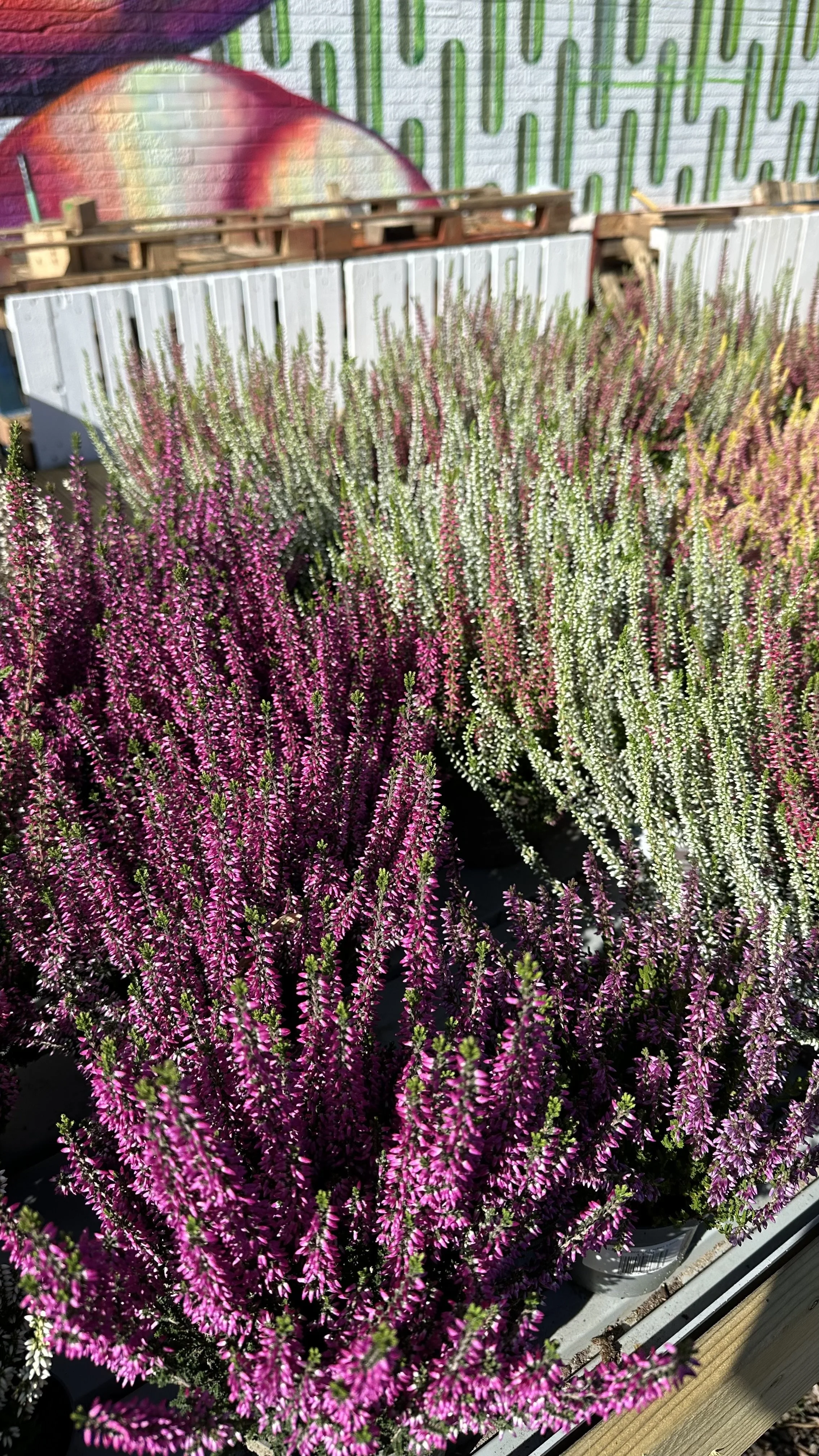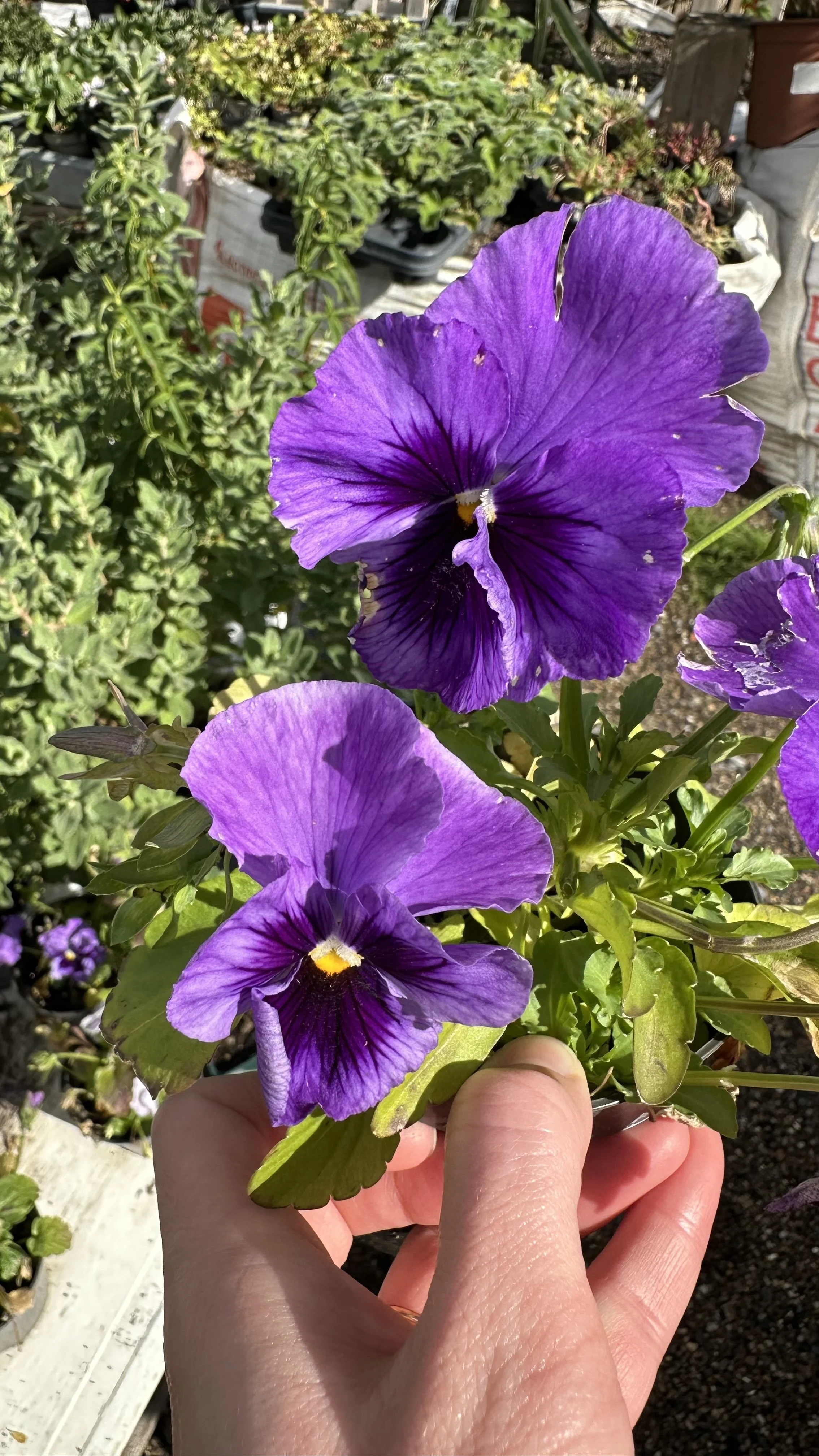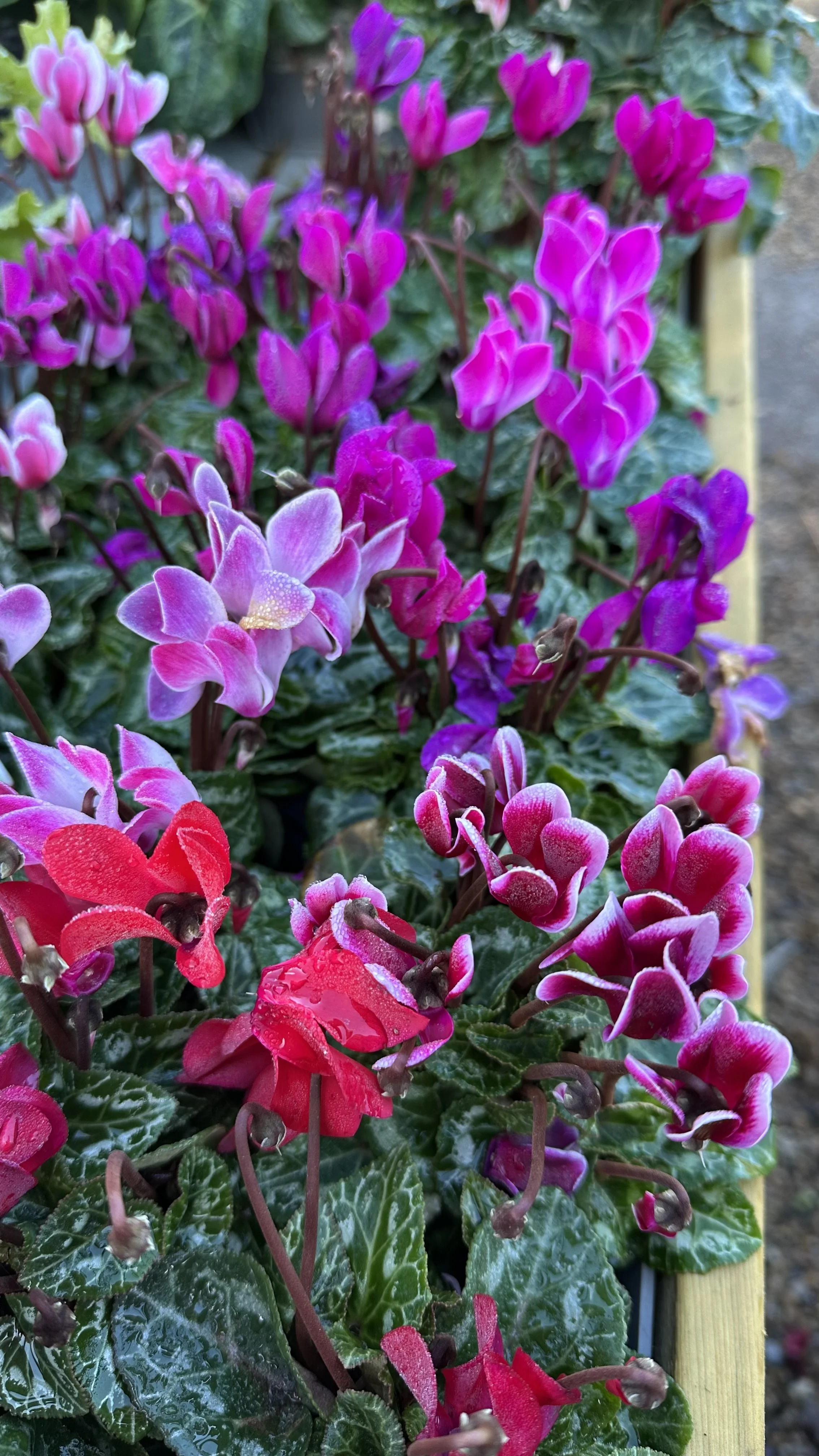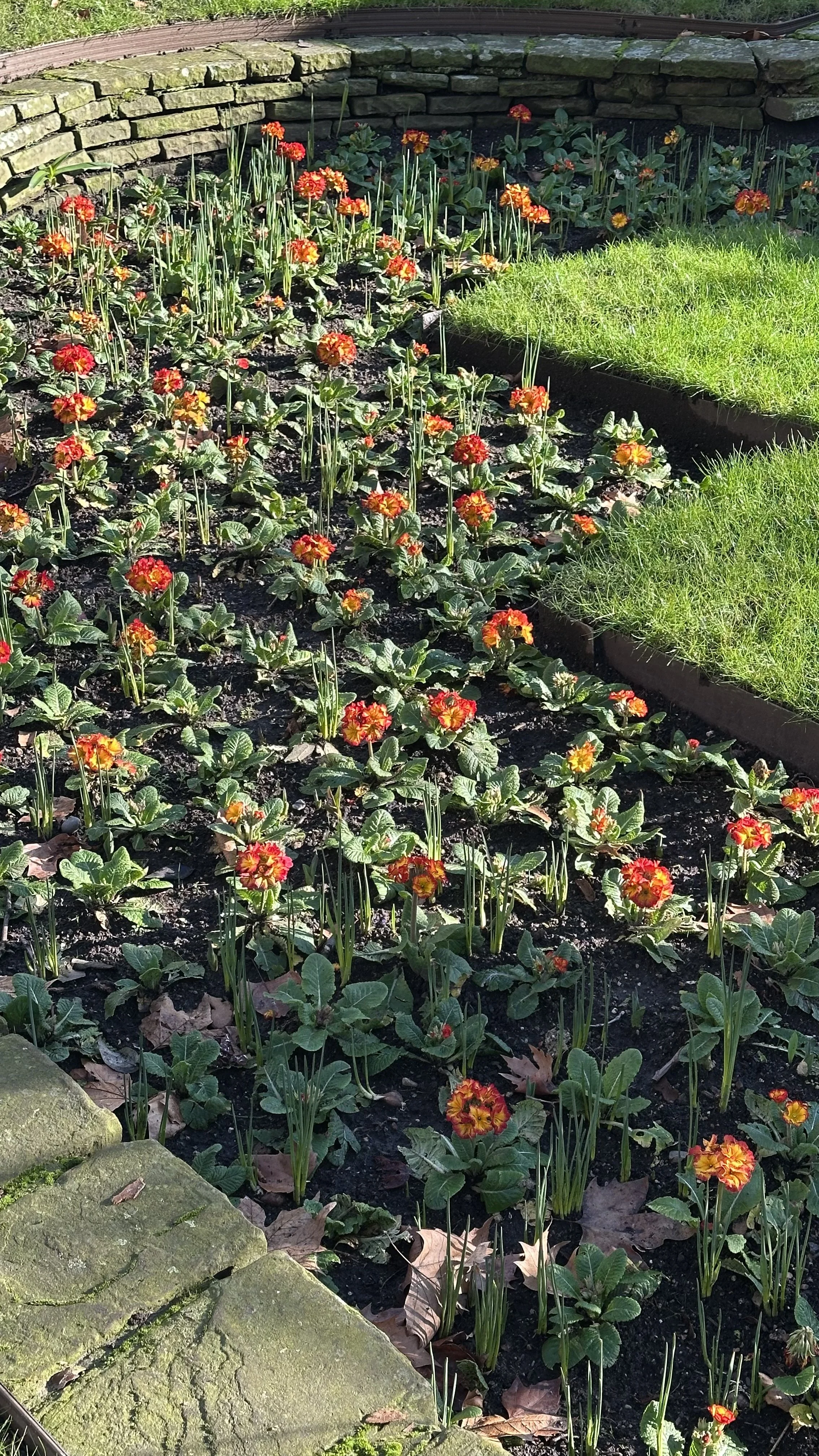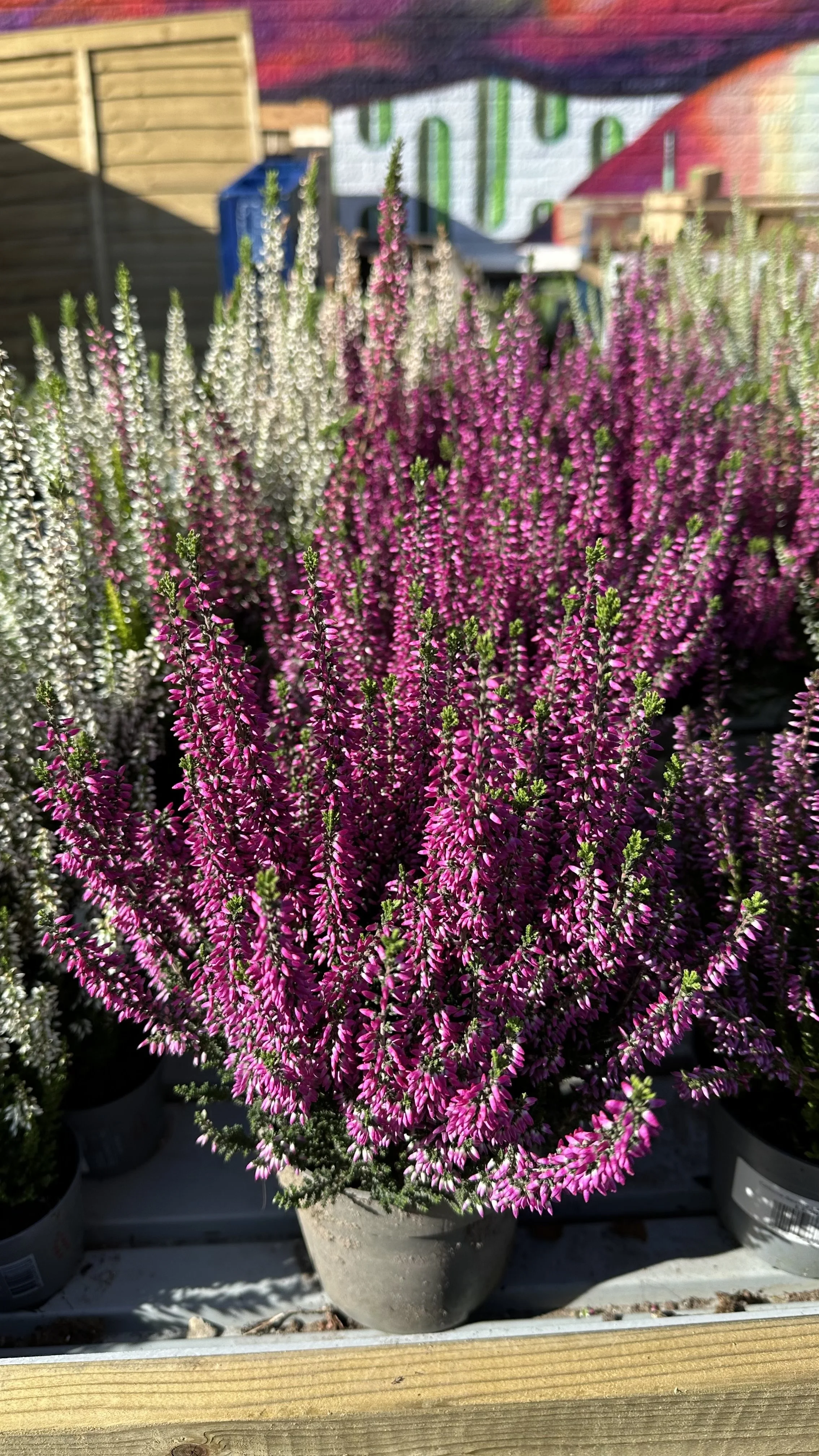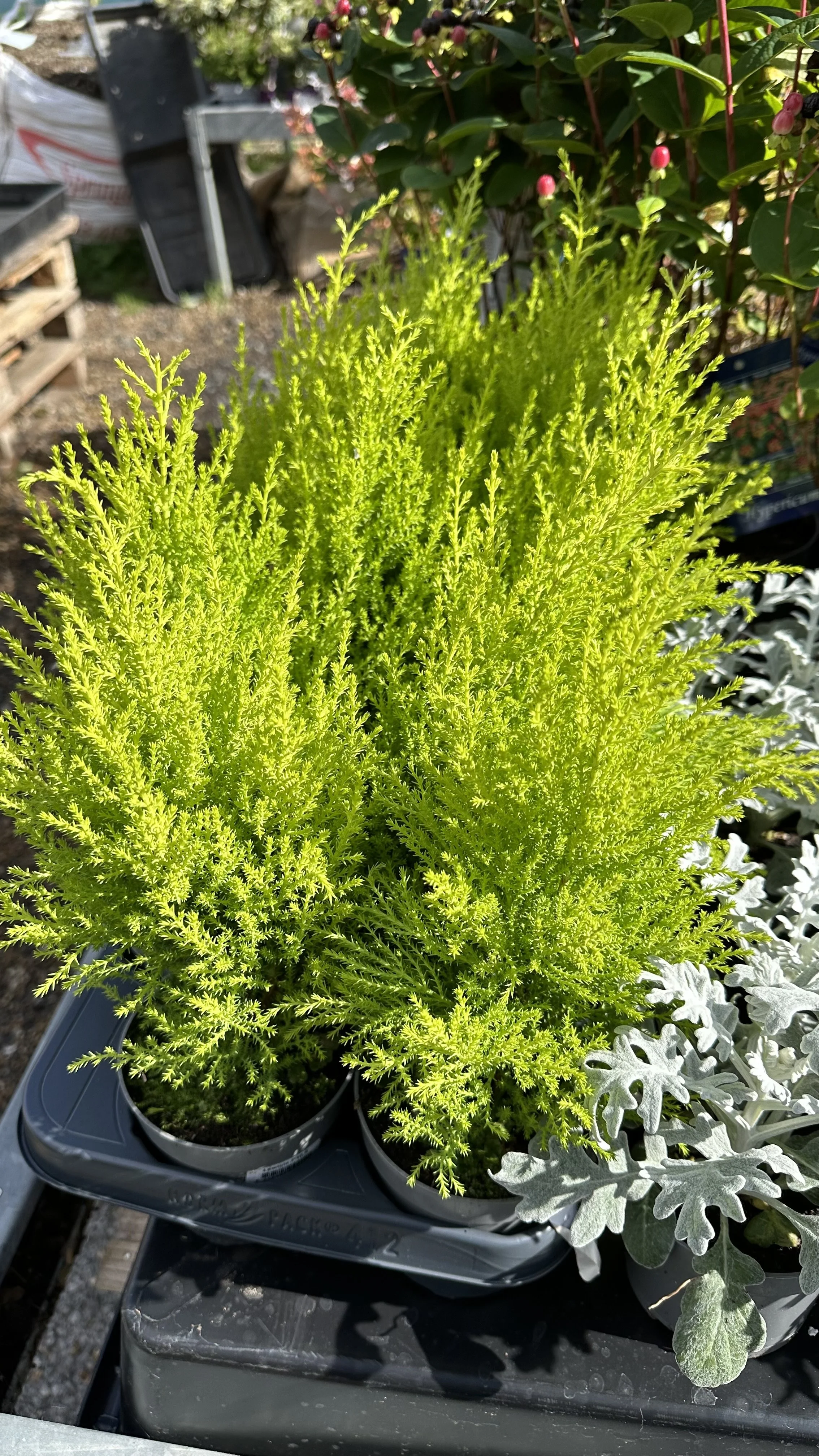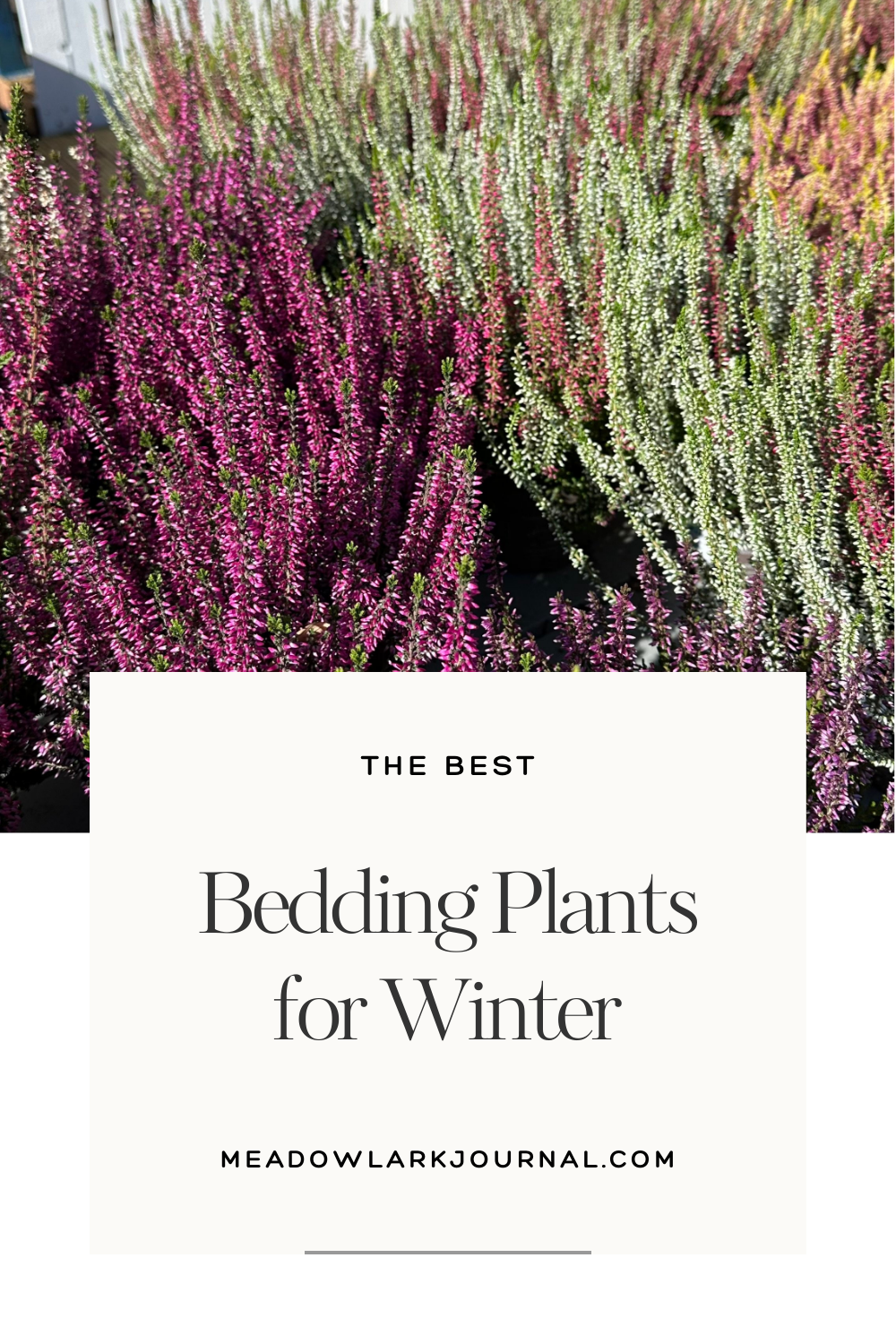Bedding Plants for Winter: The Only Ones You Need
This website is reader-supported - thank you! This post may contain affiliate links. As an Amazon Associate, I earn from qualifying purchases at no extra cost to you.
As the winter months roll in, I love to look for ways to keep my garden colorful and full of life.
Over the years, I've discovered that selecting the right winter bedding plants can transform a dull winter garden into a beautiful display.
If you're like me and want to enjoy a flourishing garden even when it's cold outside, let me share with you the only winter bedding plants you need.
For more tips, check out my guides:
Why Choose Winter Bedding Plants?
As someone who loves spending time in the garden, I've come to appreciate how winter bedding plants can keep outdoor spaces alive even when the temperature drops.
Here's why I believe incorporating these plants into your garden is a game-changer:
Continuous Color Throughout Winter:
Winter flowering plants like pansies and violas offer a burst of color during the winter months when most other plants are dormant.
They brighten up borders, window boxes, and hanging baskets, making the garden enjoyable to look at even on gray days.
Hardy and Resilient:
These plants are specially bred to withstand cold weather and frost.
They're tough enough to thrive in full sun or partial shade, and they handle the challenges of winter with ease.
I've found that they require less fuss than more delicate varieties.
Versatility in Planting:
Whether you're working with spacious garden beds or just a few pots on a balcony, winter bedding plants adapt well.
I've had great success planting them in containers, window boxes, and directly into well-drained soil in the garden.
Easy to Get Started:
Using plug plants or garden-ready options makes planting straightforward.
They establish quickly, giving you a flourishing display without a long wait.
This is perfect if you're like me and prefer seeing results sooner rather than later.
Supports Garden Ecosystem:
Some winter flowering plants can attract pollinators on milder days, contributing positively to the garden's health.
It's satisfying to know that even in winter, my garden can be a small haven for wildlife.
Bridges the Seasons:
Winter bedding plants fill the gap between autumn bedding and spring flowering bulbs.
By planting them in autumn, you ensure that your garden remains vibrant until it's time for the spring blooms to take over.
For more tips, check out my guides:
Plants That Deter Cats: A Natural Solution to Keep Cats at Bay
Top Winter Bedding Plants
1. Pansies and Violas
When it comes to winter bedding plants, pansies and violas are at the top of my list.
Here's why I think they're indispensable for a vibrant winter garden:
Wide Range of Colors:
Pansies and violas offer an impressive palette of colors, from deep purples and blues to bright yellows and oranges.
This variety allows me to mix and match them to create eye-catching displays in my garden beds and containers.
Here are the pansies I recommend:
Hardy Nature:
These flowering plants are remarkably resilient.
They can withstand frost and continue to bloom even when temperatures drop, making them ideal for the colder months.
I've noticed that with proper care, they keep their blossoms throughout winter and into early spring.
Versatility in Planting Locations:
Window Boxes:
I love planting pansies in window boxes.
They add a cheerful touch to the exterior of my house and are easily visible from indoors.
Hanging Baskets:
Pansies and violas are light enough for hanging baskets.
They trail slightly over the edges, creating a lush look that's perfect for adding color at different heights in the garden.
Borders and Edges:
Their compact size makes them perfect for edging pathways or defining garden beds.
I've used them to outline my vegetable garden, and they provide a lovely contrast to the greens.
Easy to Plant and Maintain:
Plug Plants and Garden Ready Options:
I often start with plug plants, which are young plants grown in trays.
They're convenient and establish quickly once planted.
Garden ready plants are also a great choice if you want instant impact.
Low Maintenance:
Pansies and violas don't require a lot of fuss.
As long as they're planted in well-drained soil and get some sunlight, they thrive.
I make sure to deadhead the spent flowers regularly to encourage new blooms.
Suitable for Different Light Conditions:
These plants are adaptable to both full sun and partial shade.
In my experience, they bloom profusely in sunny spots but also perform well in areas that get only morning or afternoon sun.
Long Blooming Period:
One of the things I appreciate most about pansies and violas is their long flowering season.
By planting them in autumn, I get to enjoy their blooms throughout winter and often into late spring before the summer heat sets in.
Attracts Pollinators:
On milder winter days, I've noticed that bees are drawn to the pansies in my garden.
It's rewarding to see that these plants can support local wildlife even in the off-season.
Planting Tips:
Spacing:
I plant them about 6 inches apart.
This gives them enough room to grow while still creating a full look.
Soil Preparation:
Before planting, I loosen the soil and mix in some compost to improve drainage and provide nutrients.
Here is the compost I recommend:
For more tips, check out my guides:
2. Cyclamen
Cyclamen have become one of my favorite choices for adding color to my winter garden.
Here's why I think they deserve a spot in your outdoor space during the colder months:
Distinctive Beauty:
Cyclamen are known for their delicate, upswept petals and heart-shaped leaves, often adorned with intricate patterns.
The flowers come in shades of pink, red, white, and purple, providing a lovely contrast against the typical winter backdrop.
I find that their unique appearance adds an element of elegance to garden beds and containers.
Here are the cyclamen I recommend:
Thrives in Cooler Temperatures:
These plants are well-suited for the winter months, flourishing when many other plants have retreated.
They handle cold weather impressively well, making them reliable performers in my garden during autumn and winter.
Versatile Planting Options:
Containers and Pots:
Cyclamen do exceptionally well in pots.
Using them as potted plants allows for easy relocation if needed.
Under Trees and Shrubs:
They prefer partial shade, so planting them under deciduous trees or alongside evergreen shrubs works beautifully.
In my experience, they fill in those tricky spots where other flowering plants might struggle.
Low Maintenance Needs:
Soil Requirements:
Cyclamen prefer well-drained soil.
Before planting, I mix in some organic matter to improve drainage, which helps prevent the tubers from rotting.
Watering:
Overwatering is a common mistake with cyclamen.
I water them sparingly, allowing the soil to dry out slightly between waterings.
This mimics their natural Mediterranean habitat and keeps them healthy.
Feeding:
An occasional feed with a balanced fertilizer keeps them blooming.
I usually do this once a month during the flowering period.
Here is the fertilizer I recommend:
Long-Lasting Blooms:
One of the delights of cyclamen is their extended flowering season.
Planted in autumn, they often bloom from late autumn through to early spring.
This means months of color when the garden can otherwise look bare.
Ideal for Indoor Enjoyment:
While I mostly grow them outdoors, cyclamen also make excellent houseplants.
Placed in a cool room with plenty of indirect light, they can brighten up indoor spaces.
Combining with Other Plants:
Companion Planting:
Cyclamen pair well with other winter bedding plants like pansies, violas, and heathers.
I've created combinations in window boxes and containers that showcase a mix of textures and colors.
To learn more about companion planting, check out my guide: Zinnia Companion Plants: Enhancing Biodiversity.
Underplanting with Spring Bulbs:
Planting cyclamen alongside spring flowering bulbs like snowdrops and crocuses can extend the display in your garden.
As the cyclamen begin to fade in early spring, the bulbs take over, ensuring continuous interest.
To learn more about bulbs, check out my guide: The Top 3 Bulbs that Flower in Winter.
Planting Tips:
Timing:
I plant cyclamen tubers or garden-ready plants in early autumn.
This gives them time to establish before the coldest weather arrives.
Depth and Spacing:
When planting tubers, I place them just below the soil surface, about 2-3 inches deep.
Spacing them about 6 inches apart allows enough room for growth while creating a full display.
Mulching:
Applying a layer of mulch helps protect the roots from extreme cold and retains moisture.
For more tips, check out my guides:
3. Primroses
Primroses have always held a special place in my winter garden.
Here's why I believe they are among the essential winter bedding plants you need:
Early Bloomers:
Primroses are some of the earliest spring flowers, often beginning to bloom in late winter.
Their arrival brings a much-needed splash of color when few other plants are in flower.
I've found that their cheerful blossoms lift my spirits during the final cold weeks before spring fully arrives.
Here are the primroses I recommend:
Variety of Colors:
These flowering plants come in an array of hues, including bright yellows, pinks, reds, blues, and even bi-colored varieties.
This diversity allows me to create colorful combinations in my garden beds and containers.
Hardy and Resilient:
Primroses are tough plants that can handle cold temperatures.
They thrive in partial shade to full sun, making them versatile for different spots in the garden.
I've planted them in dappled sunlight, and they've performed beautifully.
Perfect for Borders and Containers:
Borders:
I like to use primroses as border plants for winter.
Their low-growing habit makes them ideal for edging pathways and defining garden beds.
Containers and Window Boxes:
They also do well in pots and window boxes.
I've arranged them near my front door, and they create a warm and inviting entrance with their bright colors.
Easy to Plant and Maintain:
Soil Requirements:
Primroses prefer well-drained soil rich in organic matter.
Before planting, I prepare the soil by adding compost, which improves drainage and provides nutrients.
Planting Time:
I usually plant them in autumn as part of my autumn bedding routine.
This gives them time to establish before the coldest weather sets in.
Watering:
They require consistent moisture but don't like soggy soil.
I water them regularly but ensure that the soil drains well to prevent root rot.
Feeding:
An occasional feeding with a balanced fertilizer keeps them healthy and encourages more blooms.
Long Blooming Season:
With proper care, primroses can bloom from late winter well into spring.
This extended flowering period bridges the gap between winter and the full arrival of spring flowers, ensuring continuous color in the garden.
Combines Well with Other Plants:
Companion Planting:
Primroses pair nicely with other winter and early spring plants like pansies, violas, and spring bulbs such as daffodils and tulips.
I've created mixed displays that provide layers of color and interest.
Underplanting Shrubs:
Placing them beneath shrubs or among perennial plants adds depth and texture to the garden.
They fill in gaps and provide ground cover while other plants are dormant.
Attracts Wildlife:
On milder days, primroses can attract early pollinators such as bees and butterflies.
It's gratifying to see wildlife returning to the garden, signaling the approach of spring.
Planting Tips:
Spacing:
I plant primroses about 6–8 inches apart to allow them room to grow and spread.
Deadheading:
Removing spent flowers encourages the plant to produce more blooms.
I make it a habit to check my primroses regularly and pinch off any faded flowers.
Mulching:
Applying a layer of mulch helps retain moisture and protect the roots from extreme cold.
Here is the mulch I recommend:
For more inspiration, check out my guides:
4. Winter-Flowering Heathers
Winter-flowering heathers have become a highlight in my garden during the colder months.
Here's why I think they're a fantastic addition to any winter planting scheme:
Continuous Winter Color:
One of the main reasons I plant heathers is for their ability to provide vibrant color when most other plants are dormant.
From late autumn through early spring, they produce an abundance of small, bell-shaped flowers in shades of pink, purple, red, and white.
This splash of color can really brighten up the winter garden.
Here is the heather I recommend:
Evergreen Foliage:
Beyond their flowers, heathers offer year-round interest with their needle-like evergreen foliage.
Some varieties even have foliage that changes color in winter, turning bronze or deepening in hue, which adds an extra layer of visual appeal to the garden beds.
Hardy and Low Maintenance:
Adaptable to Soil Conditions:
While heathers prefer well-drained soil that's slightly acidic, I've found that they can tolerate a range of soil types as long as drainage is good.
In areas with heavier soil, I plant them on slopes or raised beds to improve drainage.
Drought Tolerant:
Once established, heathers are quite drought-tolerant.
This makes them a low-maintenance choice, as they don't require frequent watering.
I find this especially helpful during dry winter spells.
Resistant to Pests and Diseases:
Heathers are generally untroubled by pests and diseases, which means less worry and intervention on my part.
Versatile Planting Options:
Ground Cover:
I often use heathers as ground cover.
They can suppress weeds and reduce the amount of bare soil exposed in the garden.
Borders and Edges:
Their compact growth habit makes them ideal for lining paths or defining garden borders.
I've used them to create a neat edge along my garden beds.
Containers and Window Boxes:
Heathers do well in pots, which means they can be used to add color to patios, balconies, or window boxes.
I've planted them in containers near my front door for a welcoming display.
Rock Gardens and Slopes:
Their preference for well-drained soil makes them perfect candidates for rock gardens or planting on slopes where water doesn't accumulate.
Attracts Wildlife:
On milder winter days, heathers can attract bees and other pollinators looking for nectar.
It's a joy to see life in the garden during a time when it's typically quiet.
Combining with Other Plants:
Companion Planting:
Heathers pair beautifully with other winter bedding plants like pansies, cyclamen, and ornamental grasses.
I've created mixed plantings that provide a variety of textures and colors.
Evergreens and Conifers:
Combining heathers with small conifers or other evergreen shrubs adds depth to the garden.
The differing shapes and foliage colors create an interesting contrast.
Planting Tips:
Soil Preparation:
Before planting, I make sure to improve the soil with organic matter like compost or leaf mold to enhance drainage.
If your soil is alkaline, consider adding ericaceous compost to create the acidic conditions that heathers prefer.
Here is the ericaceous compost I recommend:
Planting Time:
The best time to plant winter-flowering heathers is in early autumn or spring.
Planting in autumn allows them to establish before the coldest weather, ensuring they thrive during winter.
Spacing:
I space the plants about 12 to 18 inches apart.
This allows them room to grow and fill out without overcrowding.
Mulching:
Applying a mulch of pine needles or bark chips helps maintain soil acidity and moisture levels.
It also suppresses weeds around the plants.
Pruning:
After flowering, I lightly trim the heathers to remove spent blooms and encourage bushier growth.
This simple step keeps the plants looking tidy and promotes more flowers the following season.
Watering:
While they are drought-tolerant, I water new plants regularly until they're established.
After that, they generally only need watering during prolonged dry periods.
For more ideas, check out my guides:
5. Evergreen Shrubs
Evergreen shrubs have become an indispensable part of my winter garden.
Here's why I believe they're essential for keeping outdoor spaces lively during the colder months:
Year-Round Greenery:
Unlike deciduous plants that lose their leaves, evergreen shrubs maintain their foliage throughout the year.
This constant presence of greenery adds structure and interest to the garden, especially during the winter months when other plants have died back.
I find that they keep my garden looking full and alive, even on the chilliest days.
Variety of Options:
There are numerous evergreen shrubs to choose from, each offering different shapes, sizes, and colors.
Some of my favorites include:
Holly Bushes:
With their glossy, dark green leaves and bright red berries, holly bushes not only provide visual interest but also add a festive touch during the holiday season.
The berries are also a food source for birds, which brings a bit of wildlife activity to the garden.
Here is the holly bush I recommend:
Boxwood:
These shrubs are excellent for creating hedges or topiaries.
Their dense foliage responds well to pruning, allowing you to shape them as desired.
Boxwood is often used to define garden borders or create focal points.
Here is the boxwood I recommend:
Small Conifers:
Dwarf varieties of cypress, spruce, or juniper add texture and varying shades of green to the garden.
They are hardy and require minimal maintenance once established.
Here is the dwarf cypress I recommend:
Low Maintenance:
One of the aspects I appreciate most about evergreen shrubs is their ease of care.
They are generally hardy plants that can withstand cold temperatures and don't demand frequent attention.
Once planted, they require minimal watering and only occasional pruning to maintain their shape.
Provides Structure:
Evergreen shrubs add depth and dimension to the garden.
You can use them to create backdrops for your winter bedding plants like pansies and cyclamen.
The contrast between the evergreen foliage and the colorful flowers enhances the overall appearance of the garden beds.
Wildlife Support:
These shrubs offer shelter and nesting sites for birds and small animals during the winter months.
I've noticed that evergreens in my garden become a hub of activity, providing a haven for wildlife seeking refuge from the cold.
Planting Tips:
Site Selection:
Most evergreen shrubs thrive in full sun to partial shade.
I choose planting locations that receive adequate sunlight but are protected from harsh winter winds, which can dry out the foliage.
Soil Preparation:
Evergreen shrubs prefer well-drained soil.
Before planting, I amend the soil with organic matter like compost or well-rotted manure to improve drainage and provide essential nutrients.
Planting Time:
Autumn is an ideal time to plant evergreen shrubs.
The cooler temperatures reduce stress on the plants, and the still-warm soil allows roots to establish before the onset of winter.
Spacing:
It's important to consider the mature size of the shrub.
I space them accordingly to prevent overcrowding and ensure that each plant has enough room to grow naturally.
Mulching:
Applying a layer of mulch around the base of the shrubs helps retain soil moisture and regulate temperature fluctuations.
I use organic mulches like bark chips or pine needles, which also contribute to soil health as they decompose.
Watering:
While evergreen shrubs are relatively drought-tolerant once established, I make sure to water them regularly during the first growing season.
This helps develop a strong root system.
Pruning:
Minimal pruning is required.
I usually trim any dead or damaged branches in late winter or early spring.
For shrubs like boxwood, light shaping can be done to maintain the desired form.
Combining with Other Plants:
Underplanting:
I often plant spring flowering bulbs like snowdrops, crocuses, or daffodils beneath evergreen shrubs.
As these bulbs emerge and bloom, they create a layered effect that adds interest to the garden.
Companion Planting:
Evergreen shrubs pair well with other winter bedding plants.
The consistent green backdrop highlights the colors of pansies, violas, and heathers, making the flowers stand out even more.
Creating Hedges and Screens:
For privacy or to define different areas in the garden, you can use taller evergreen shrubs.
They serve as natural barriers without the need for fences or walls.
For more ideas, check out my guides:
Quick FAQs
1. What are the best bedding plants for winter containers?
Pansies, violas, and cyclamen are excellent choices for winter bedding plants for containers.
They thrive in pots and can add color to patios and doorsteps.
2. Can I use winter bedding plants in hanging baskets?
Absolutely!
Plants like ivy, pansies, and small evergreens work well in hanging baskets during winter.
Winter bedding plants for hanging baskets can brighten up your outdoor space.
3. Do winter bedding plants need full sun or partial shade?
Many winter bedding plants can tolerate partial shade, but they generally perform best with some sunlight.
Check the specific needs of each plant to ensure they thrive.
4. When should I plant spring flowering bulbs?
Spring flowering bulbs should be planted in autumn before the ground freezes, allowing them to establish roots over winter.
This ensures a beautiful display in spring.
5. How do I care for winter bedding plants in pots?
Regularly check for signs of pests or disease, water appropriately (avoid over-watering), and remove any dead leaves or flowers to encourage new growth.
Using well-drained soil is crucial for potted plants.
Wrap-Up
Winter gardening doesn't have to be a dull experience.
By choosing the right winter flowering bedding plants, you can keep your garden vibrant and full of life even in the coldest months.
I've found that preparing well-drained soil is key to the success of these plants.
Whether you're planting flower bulbs, bare root perennials, or introducing a new flower to your collection, the effort is well worth it.
Pansies, in particular, have been a delightful addition to my garden.
Their cheerful blooms bring color and joy when most other plants are dormant.
So don't let the winter months discourage you.
With a bit of planning and the right plant choices, you can enjoy a beautiful garden all year round.
